
Landform Regions by brittany.francescon
A unique rock formation in New South Wales known as the Sphinx. Much of the Western Plateau has existed as a landmass for more than 500 million years and is made up of individual plateaus, including the Kimberley, Hamersley, and Yilgarn. These plateaus in part comprise cratons such as the Yilgarn Craton and the Pilbara Craton.
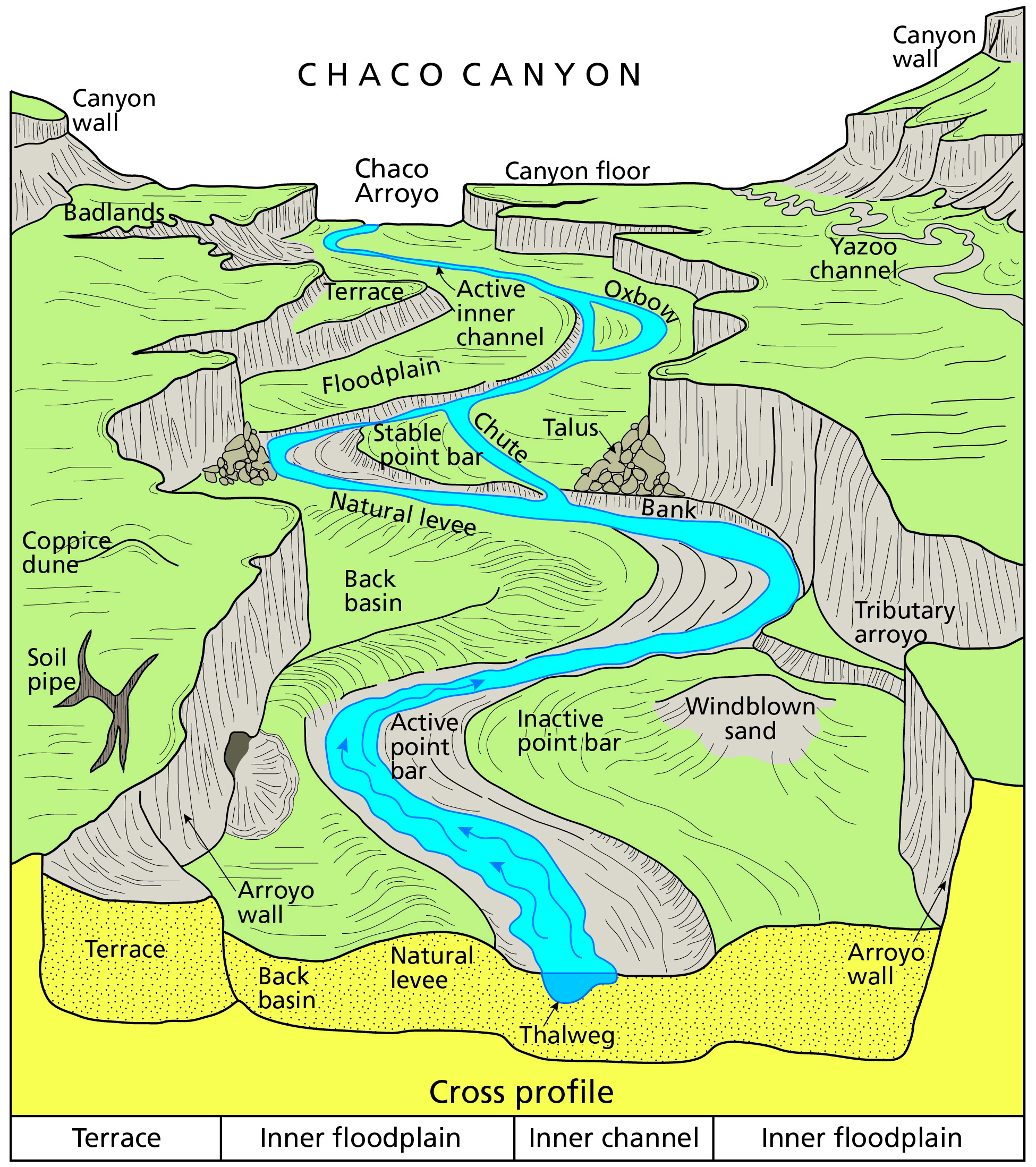
River Systems and Fluvial Landforms Geology (U.S. National Park Service)
Within the field of geography, the term landform refers to how features of Earth's terrain formed over the course of millions of years, creating a landscape that has a varying topography and.

What are landforms Landforms lessons, Landforms, Image
A landform is a feature on the Earth's surface that is part of the terrain. Mountains, hills, plateaus, and plains are the four major types of landforms. Minor landforms include buttes, canyons, valleys, and basins. Tectonic plate movement under the Earth can create landforms by pushing up mountains and hills. Erosion by

Landforms Map
Landforms are the natural properties and shapes prevalent on the earth's surface. These basically consist of the solid parts of the planet which start from the mountains and end in the ridges in the ocean. That means, everything in between are different types of landforms. With diverse physical characteristics, landforms are spread throughout.
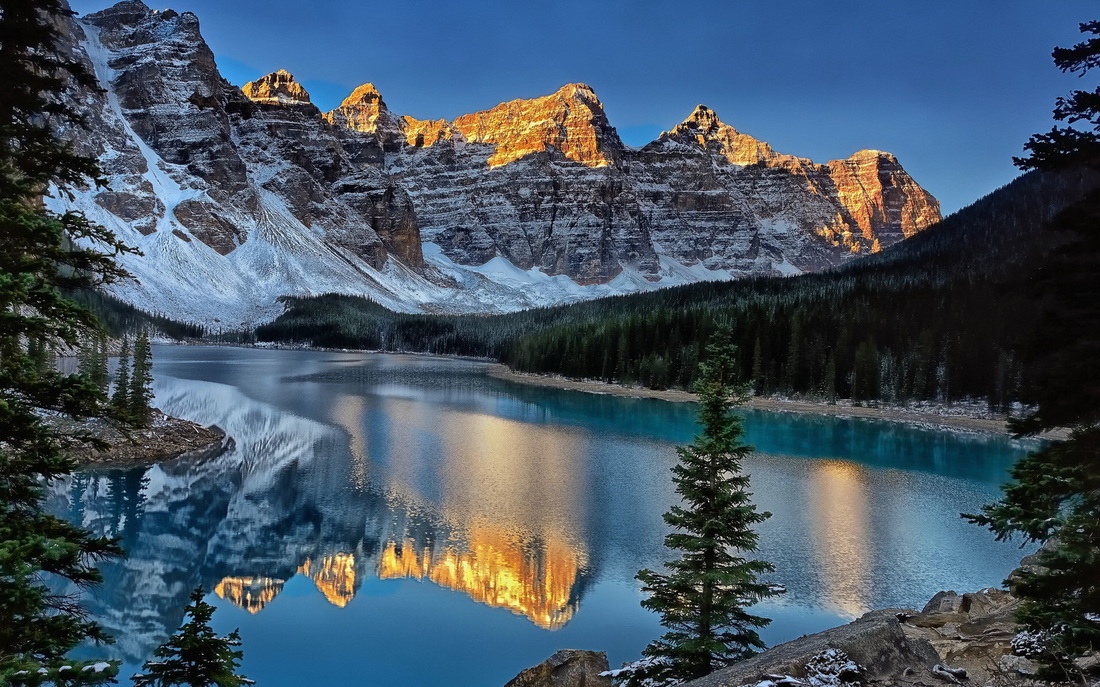
Landform Regions WEST2East
A landform region is a specific area that is made up of the same major landforms, such as plains, mountains or plateaus. Landforms can be described as any natural feature that is on the earth's surface. Some of the major landform regions in the United States include plains throughout parts of Texas, Oklahoma, Mississippi, Florida and Illinois.

PPT LANDFORM REGIONS IN CANADA PowerPoint Presentation, free download
A landform is a natural or anthropogenic [1] [2] land feature on the solid surface of the Earth or other planetary body. Landforms together make up a given terrain, and their arrangement in the landscape is known as topography.

Definition Of Landform In Geography DEFINITIONKA
What is Landforms; Types, Formation » Geology Science Geology Landforms Landforms are natural features that shape the Earth's surface. They are the result of various geological processes and can be found across the planet, encompassing a wide range of shapes, sizes, and formations.

Different Types of Landforms Major Types of Landforms NCERT Geography
The Mountain Landform ••• The most common type of mountains arise where the Earth's crust experienced folding or faulting, such as the Canadian Rockies and the Alps. Fault-block mountains, such as California's Sierra Nevada, are formed when Earth's crust cracked and was pushed upward.
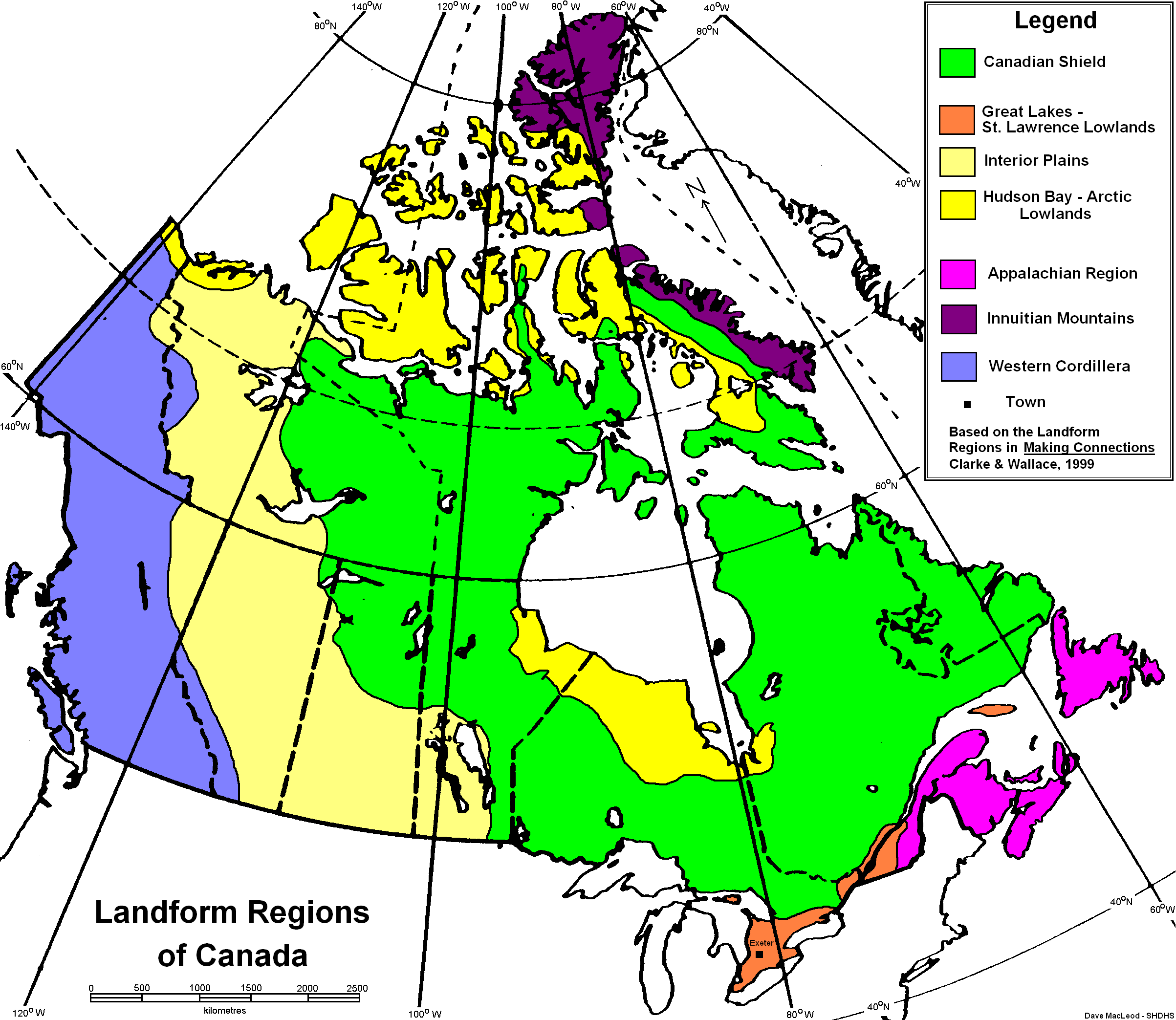
Western Cordillera Landform Region Western Cordillera What is it?
A Story Map for Geography of Australia

Major Landforms in the Midwestern Region Sciencing
The Australian continent is broadly divided into 4 major landform regions, each of which is comprised of smaller-scale constituent landform regions - eastern highlands, central lowlands, western plateau and the coastal plains. The Eastern Highlands, the Great Divide, also called the Great Diving Range, runs for about 4,000 km from the tip of.

What is Geography? Mind Map
A landform is a feature on the Earth's surface that is part of the terrain. Mountains, hills, plateaus, and plains are the four major types of landforms. Read through this article to learn more. Glacial landforms (BBC, n.d.) Corries, cwms or cirques are the starting points for a glacier.
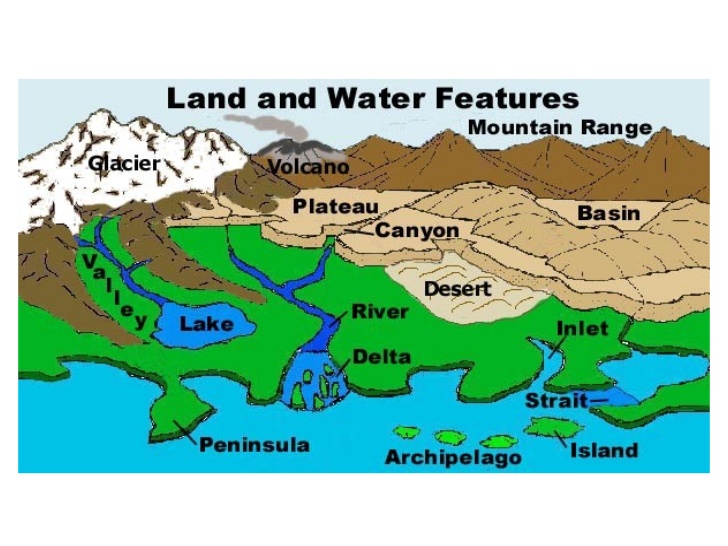
Landforms and Bodies of Water Lakeview Middle School Library
mountain, landform that rises prominently above its surroundings, generally exhibiting steep slopes, a relatively confined summit area, and considerable local relief. Mountains generally are understood to be larger than hills, but the term has no standardized geological meaning. Very rarely do mountains occur individually.
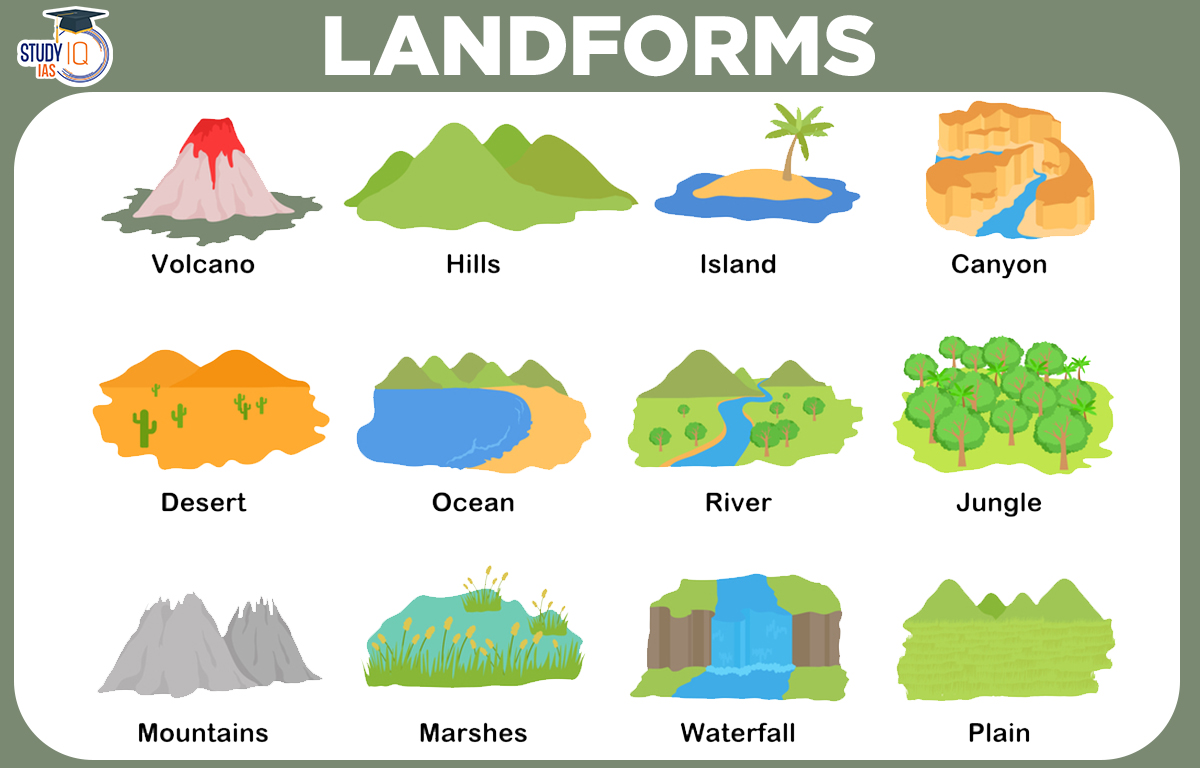
Landforms of the Earth, Meaning, Types, Benefits
A landform is a feature on Earth 's surface that is part of the terrain. Mountains, hills, plateaus, and plains are the four major types of landforms. Minor landforms include buttes, canyons, valleys, and basins. Tectonic plate movement under Earth can create landforms by pushing up mountains and hills.
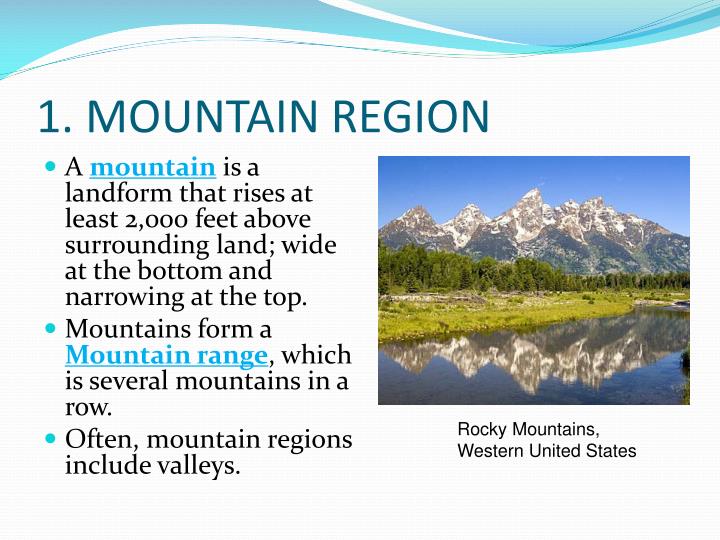
PPT Physical regions Landforms PowerPoint Presentation ID2029313
coastal landforms, any of the relief features present along any coast, the result of a combination of processes, sediments, and the geology of the coast itself. The coastal environment of the world is made up of a wide variety of landforms manifested in a spectrum of sizes and shapes ranging from gently sloping beaches to high cliffs, yet.
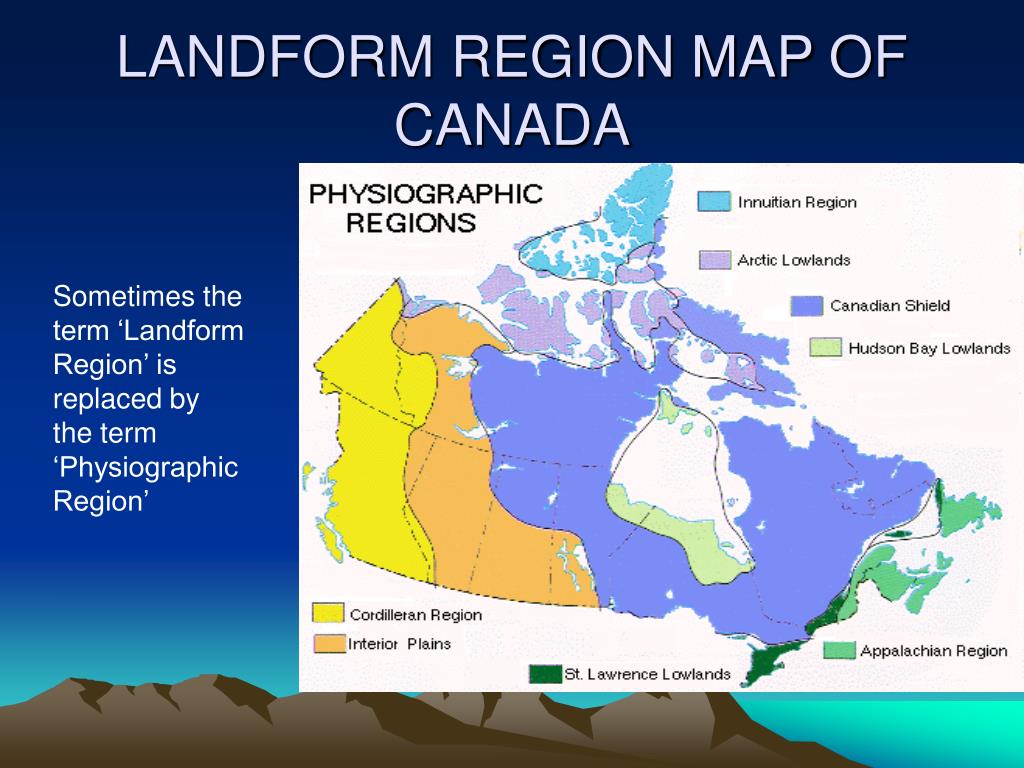
PPT LANDFORM REGIONS IN CANADA PowerPoint Presentation ID309849
State 4 Characteristics of the landform regions The two extensive shield zones, east and west of Hudson Bay. The two core areas are marked by more level terrain which was flooded by lakes and seas during ice retreat. Going from northwestern Québec through northern Ontario ,.

Gr. 9 Geography Landform Regions
en.wikipedia.org